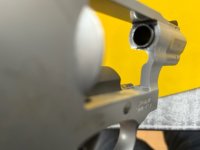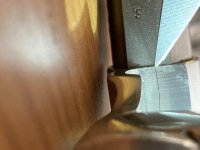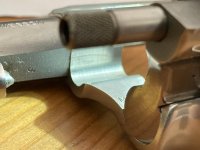I have a 340sc and have read about these guns having frame cracking under the forcing cone. I purchased mine in 2003 and have shot it very sparingly with 357 loads mainly .38's and have carried it a lot. I noticed a small ) shaped mark under the forcing cone which you can feel with a pick it appears that the titanium cylinder gas ring is making contact there from recoil. Have any of you heard of this? I find very limited information and Smith and Wesson is on holiday break till January 3rd I'm obviously concerned about shooting it and having it grenade in my hand 
Last edited:





